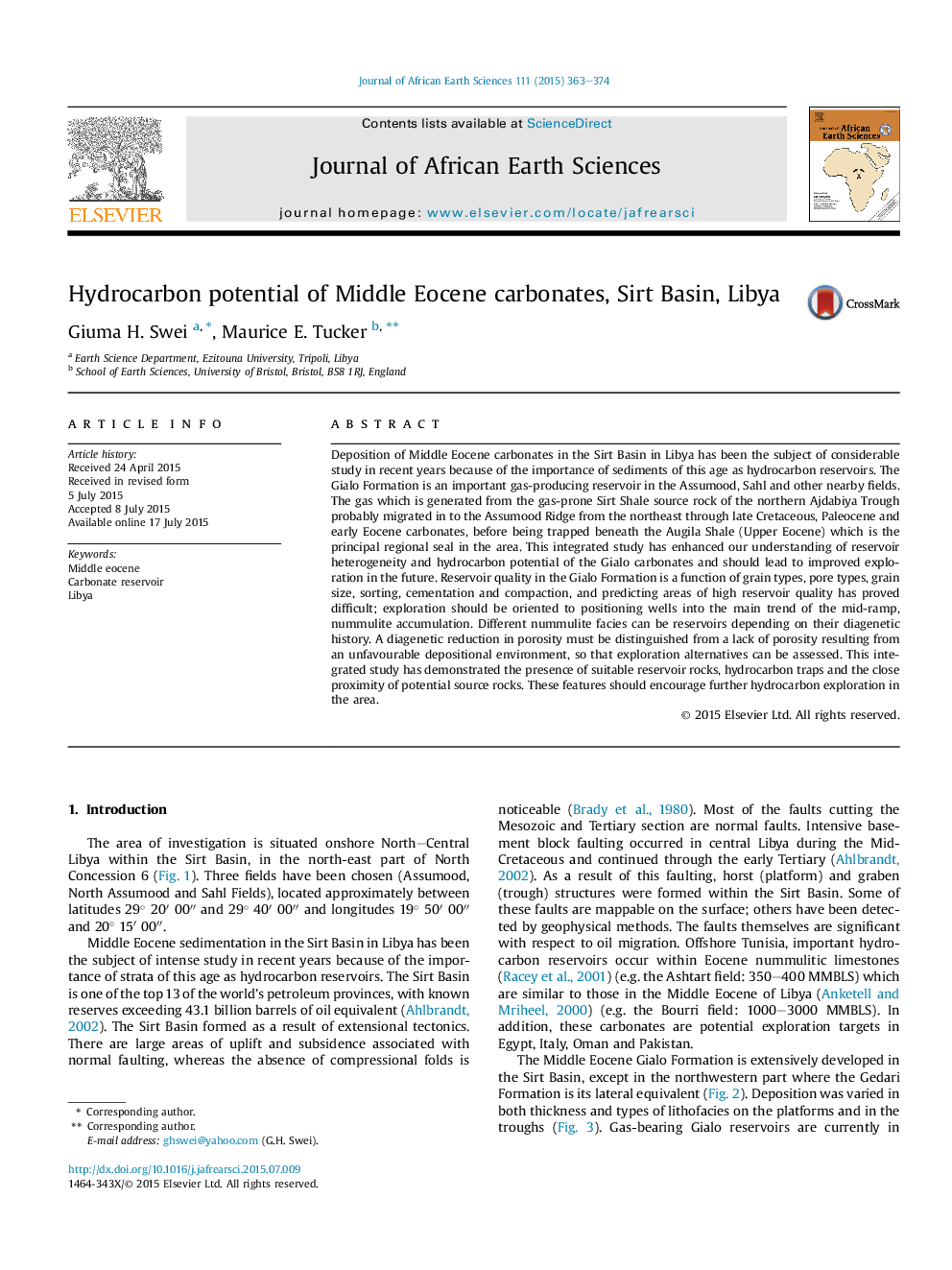| کد مقاله | کد نشریه | سال انتشار | مقاله انگلیسی | نسخه تمام متن |
|---|---|---|---|---|
| 4728509 | 1640196 | 2015 | 12 صفحه PDF | دانلود رایگان |

• Eocene carbonates are important gas-producing reservoirs in the Sirt Basin, Libya.
• Facies and diagenesis control reservoir type and quality in the Gialo Formation.
• Platform foraminiferal grainstones have the highest reservoir potential.
• Seismic reveals incised channels on the Zelten platform top, likely from emergence.
Deposition of Middle Eocene carbonates in the Sirt Basin in Libya has been the subject of considerable study in recent years because of the importance of sediments of this age as hydrocarbon reservoirs. The Gialo Formation is an important gas-producing reservoir in the Assumood, Sahl and other nearby fields. The gas which is generated from the gas-prone Sirt Shale source rock of the northern Ajdabiya Trough probably migrated in to the Assumood Ridge from the northeast through late Cretaceous, Paleocene and early Eocene carbonates, before being trapped beneath the Augila Shale (Upper Eocene) which is the principal regional seal in the area. This integrated study has enhanced our understanding of reservoir heterogeneity and hydrocarbon potential of the Gialo carbonates and should lead to improved exploration in the future. Reservoir quality in the Gialo Formation is a function of grain types, pore types, grain size, sorting, cementation and compaction, and predicting areas of high reservoir quality has proved difficult; exploration should be oriented to positioning wells into the main trend of the mid-ramp, nummulite accumulation. Different nummulite facies can be reservoirs depending on their diagenetic history. A diagenetic reduction in porosity must be distinguished from a lack of porosity resulting from an unfavourable depositional environment, so that exploration alternatives can be assessed. This integrated study has demonstrated the presence of suitable reservoir rocks, hydrocarbon traps and the close proximity of potential source rocks. These features should encourage further hydrocarbon exploration in the area.
Figure optionsDownload as PowerPoint slide
Journal: Journal of African Earth Sciences - Volume 111, November 2015, Pages 363–374